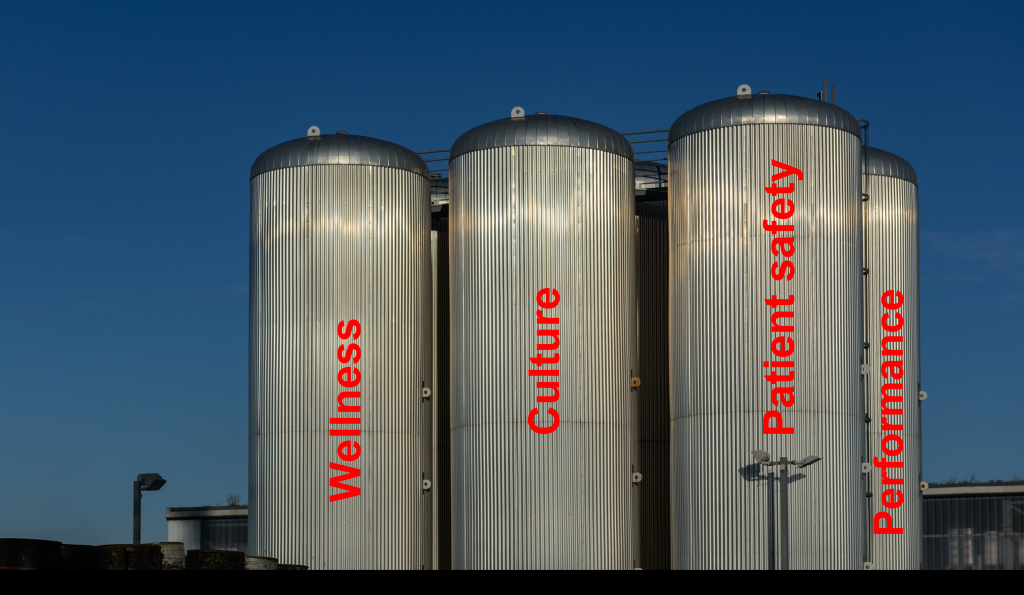Individual and team wellness as a precondition for safe and quality patient care
A comprehensive version of my commentary on Staff Wellness at the ACEM patient safety workshop 7 March 2019, Melbourne.
What does staff safety (and wellbeing) have to do with patient safety??What happens when staff are well, or when they are unwell?What can we do with the knowledge we have acquired?
The psychological and physical safety (and wellness) of the workforce is integral to the provision of high quality and safe patient care. We will not advance the latter until we address and optimise the former.
We can easily accept that this statement makes inherent sense. We know that our organisations genuinely subscribe to the principle of staff safety, yet the translation of this into practice is sometimes difficult to discern.
A large part of our sense of wellbeing comes from whether we derive meaning and purpose in work
The health care workforce is composed of well intentioned, well-prepared people in a variety of roles and clinical disciplines who do their best every day to ensure that patients are well cared for.
It is from this aspirational mission of caring for people in times of their greatest vulnerability and need that health care workers find meaning, but also joy, in their work.
Yet many of us suffer harm, physical and psychological.
The kinds of physical injuries we sustain include mechanical injury and blood-borne infection
Interestingly, healthcare workplaces report an increasing incidence of these injuries over time, and a far greater incidence than in other industries [1]
But the kind of injury is that is more prevalent yet more insidious is psychological injury:
Emotional abuse, threats of physical assault – from patients
Bullying, harassment, discrimination – from within our profession
The concept of ‘learning by humiliation’
Less overt behaviours of ignoring or isolating, and using nonverbal expressions of judgment, mocking, or exasperation.
These are often accepted as “normal” conditions of the health care workplace. But they are so incredibly harmful.
Such behaviours create a culture of fear and intimidation, diminish individual and collective pride and morale, decrease job satisfaction, impair learning, and sap joy and meaning from work. [1]
But they do even more than that. These behaviours influence workplace climate and, ultimately impact safety – for staff and for patients.
How then do the concepts of professionalism and teamwork tie in with the idea of staff wellness when it comes to high-quality and safe patient care delivery?
Wellness, Professionalism and Performance are inextricably linked, but my conceptualisation of how they are linked has evolved. I used to think that the three were linearly related – that Wellness promotes self-awareness, which promotes an ability to work in teams, which then promotes positive, measurable healthcare outcomes for patients.
I now think that the relationship is more triangular: that in addition to the above, Wellness influences Performance directly, and also that Professionalism and Performance respectively feed back on Wellness in a bidirectional manner. Working in a cohesive, functional team, where information is readily shared, and help is easily accessible reinforces staff wellness, individually and collectively. Further, good performance influences wellness via gratification and recognition; equally, poor performance and the commission of error – if managed effectively with respect and with compassion – can also influence Wellness.
Why is wellness good?
Wellness can be defined in various ways. One way is to consider the Wellness Wheel [https://www.acep.org/how-we-serve/sections/wellness/], which includes facets which are quite obvious like physical, emotional and social wellness, but also facets like occupational, intellectual, financial and spiritual wellness.
How ever wellness may be defined, well clinicians are associated with better outputs and outcomes.
“Well” members of the workforce:
deliver more effective and safer care,
are more satisfied,
are less likely to experience burnout,
and are less likely to leave the organization or the profession.
They are more likely to go beyond the call of duty, consistently exhibit citizenship behaviors, and be patient-centered, leading to greater patient satisfaction.[2]
The older I get, the more I appreciate that what is most valuable about service we deliver is the stuff we can’t be paid for.
At organisational level, a well workforce is associated with:
Better staff recruitment and retention
Decreased sick leave
Greater patient satisfaction
Decreased errors
Un-wellness is bad, not just for obvious reason, but because the opposite of the above is not simply a lack of quality care – it’s a degradation of care delivered to the patient.
Unless caregivers are given the protection, respect, and support they need, they are more likely to:
fail to follow safe practices,
not work well in teams,
gain lower patient satisfaction,
make errors.
On active surveillance those who were depressed made more than six times as many errors in medication as their non-depressed peers. Those who were burnt-out reported more errors but their error rate was not increased compared with non-burnt out residents. [3]
Stress has predictable impact on wellbeing, but it also impairs learning and medical decision making, and thus jeopardises patient care and safety. [4]
So, we recognise better than we have before that staff wellness needs to be a priority, at individual, departmental and organisational level. But what do we do with this recognition and knowledge?

What we tend to do is to consider and manage workforce safety in silos often unconnected to the work of culture, or performance, or indeed patient safety. It tends to be considered an HR or employee issue rather than an issue that impacts the recipient of front-line service – the patient.
In fact, staff safety and patient safety are inextricably linked, and are grounded in the same safety science. We need to work to align, and preferably integrate our approach.
How do we do this? I don’t have the magic answer but I do have some thoughts. Read them and the reference list here.

